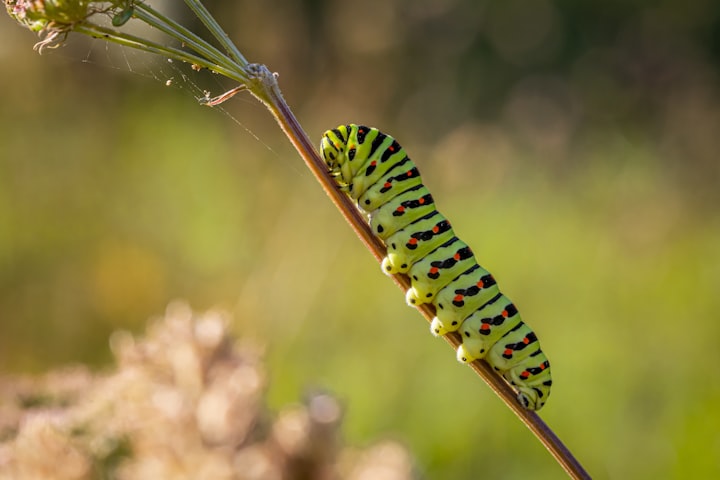Caterpillars as Bioreactors for High-Quality Protein Production
How caterpillars are disrupting protein manufacturing.

Cocoon Bioscience, the Madrid-based company just raised $15.9 million to grow its high-value proteins business. What’s the big deal? They are not your typical protein business that uses steel bioreactors, they use caterpillars as bioreactors.
Cocoon Bioscience is developing recombinant proteins for cultivated meat growth media. In other words, they’re using their expertise to help grow alternative proteins, like plant-based and cultivated/lab-grown meats.
How does it work?
Instead of relying on traditional steel bioreactors, Cocoon is using looper moth caterpillars as bioreactors to develop growth factors for cultivated meat and other alternative proteins. According to Cocoon’s CEO, Josh Robinson, it’s like “leveraging cocoons as natural, low-cost bioreactors.” Instead of traditional microbial fermentation via steel bioreactors, Cocoon Bioscience injects each cocoon with a little bit of Baculovirus.
Baculovirus Expression Vector Systems (BEVS) use a virus called baculovirus to infect insect cells and get them to produce foreign genes that make specific proteins. It’s like having a tiny protein factory inside an insect. BEVS can produce a boatload of high-quality proteins, even the really complex ones that other systems struggle with. Plus, they have low levels of impurities and other contamination that can mess things up.
As Agfunder mentioned, the Baculovirus Expression Vector Systems (BEVS) used by Cocoon Bioscience can increase the speed of expression of many protein families. This method is a lower-cost production route than traditional bioreactor-based production.
Why is this so important?
Cultivated meat companies need large-scale bioreactors to manufacture meat. The growth factors are required to program bovine cells to perform the way they need to, making them a hero ingredient for cultivated meat companies. Those growth factors are typically produced in bioreactors, and it becomes really expensive if you’re doing that in the traditional way. The price of growth factors for cultivated meat varies depending on the specific factor and supplier. According to one analysis, albumin is expected to make up 96.6% of production volume, with transferrin and insulin making up smaller percentages.
But with Cocoon’s moth-grown media, the need for expensive bioreactors is eliminated, leading to faster development times and lower costs for alternative proteins.
Scaling up
The new production facility in Bilbao is expected to be fully operational by 2024 and will allow the company to produce kilograms to tens of kilograms of growth factors and enzymes to meet demand from current and potential partners.
Some of you might be thinking, “Why use moth-grown media when we’re moving away from animal-based growth mediums like fetal bovine serum?” Fair question. While the trend is certainly moving towards non-animal-based mediums, Cocoon’s technology could still be useful for those who want to keep costs down.
All in all, it looks like Cocoon Bioscience is set to make a big splash in the alternative protein industry. The use of looper moth-based tech to produce growth factors for cultivated meat and other alternative proteins could be a game-changer in terms of reducing costs and increasing efficiency.
Summary
Cocoon Bioscience’s innovative use of looper moth caterpillars as bioreactors to produce growth factors for cultivated meat and other alternative proteins has the potential to reduce the friction in the alternative protein industry by making it easier for companies to scale up.
By eliminating the need for expensive traditional bioreactors which has been a bottleneck for the alternative protein industry, Cocoon’s technology could significantly reduce costs and increase efficiency for companies producing alternative proteins. The new production facility in Bilbao, expected to be operational by 2024, will enable the company to meet the growing demand from current and potential partners.
While the trend is moving towards non-animal-based growth mediums, Cocoon’s technology still has potential for those who want to keep costs down.
Thank you for taking the time to read this article! If you found it informative and interesting, consider joining my newsletter, where I explore the intersection of biology, technology, and business in creating a sustainable food system.
Reference:
- https://www.cocoonbioscience.com/our-technology/
- https://agfundernews.com/exclusive-cocoon-bioscience-closes-16m-round-to-turn-moths-into-bioreactors-for-cultivated-meat
- https://gfi.org/resource/cultivated-meat-growth-factor-volume-and-cost-analysis/
About the Creator
Eshan Samaranayake
Exploring how biotech, food tech, alternative proteins, and business can help develop a sustainable world 🌏 https://linktr.ee/eshan.s
Enjoyed the story? Support the Creator.
Subscribe for free to receive all their stories in your feed. You could also pledge your support or give them a one-off tip, letting them know you appreciate their work.






Comments
There are no comments for this story
Be the first to respond and start the conversation.